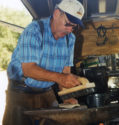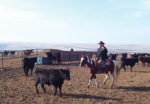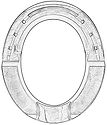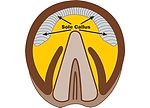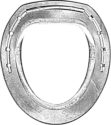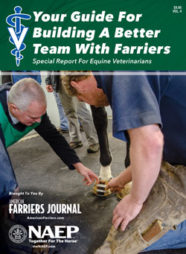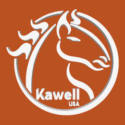Advertise Follow Us
Articles Tagged with ''breakover''
Farrier Innovations
Pinpointing P-3 During The Shoeing Cycle
California farrier says his scoring system provides valuable information for balance and breakover management
Read More
Recognize Pedal Osteitis & Stop It Cold
The signature sign is a crescent-shaped bruise on the sole along the edge of the coffin bone, but the condition is not always so easy to diagnose
Read More
Reading Shoe Wear Gives Farriers An Edge
Not everyone does it, but farriers who know what they’re looking for on the bottom of old shoes can find clues to help keep a horse comfortable and healthy
Read More
Shoeing Feedlot Horses
Four veteran shoers share what they’ve learned about this challenging type of work
Read More
The Right Shoe: Using An Aluminum Bar Shoe
With this shoe, the horse—not the farrier—determines the raised heel angle where the animal is most comfortable
Read More
How To
Proper Hoof Trimming And Placing Of Natural Balance Shoes Is Essential
Pay special attention when preparing a foot with this shoeing system
Read More
Horseshoeing 101
While you have to watch out for the serious hoof problems, don’t forget about proper physiologic horseshoeing
Read More
The Right Shoe
Blunt-Toe Shoe Eases Breakover
How, When and Where to Use This Valuable Shoe
Read More


